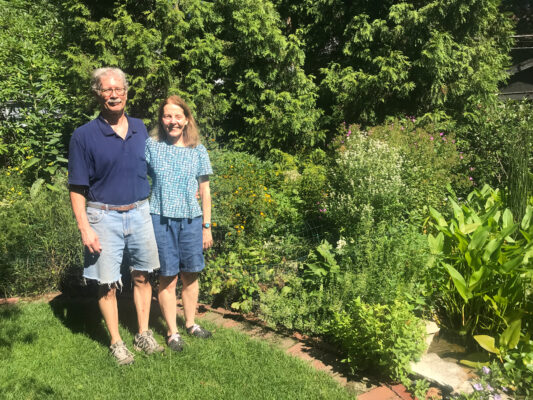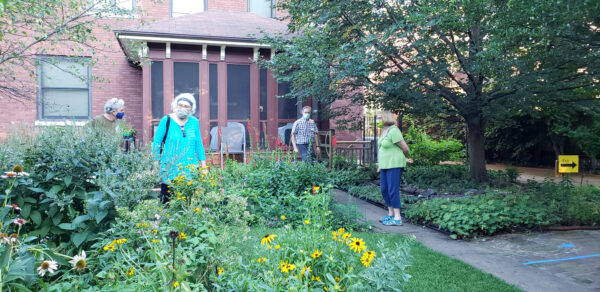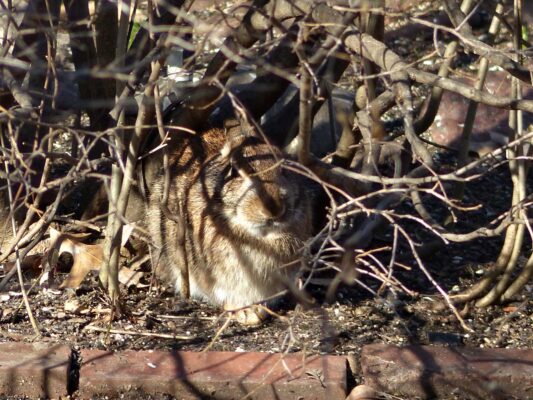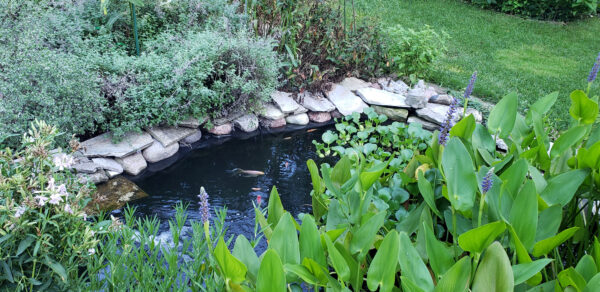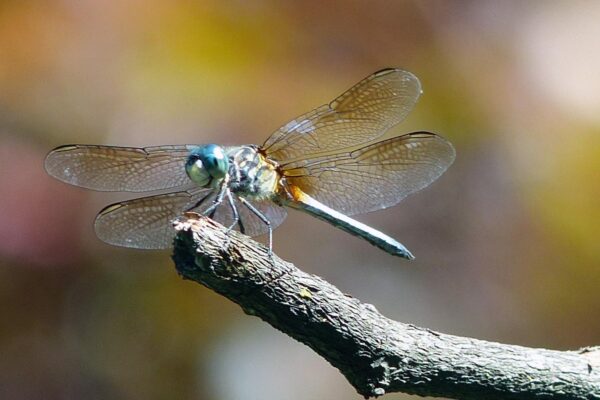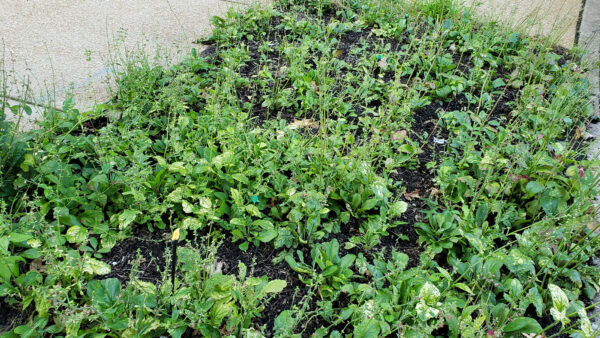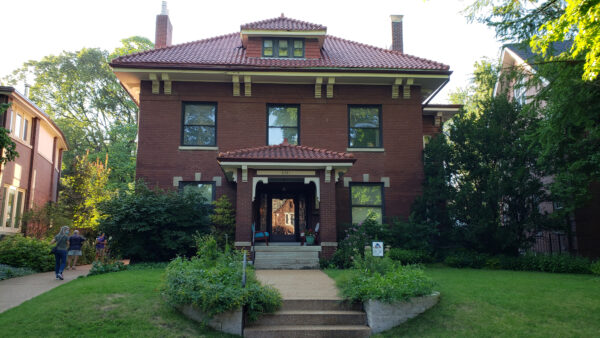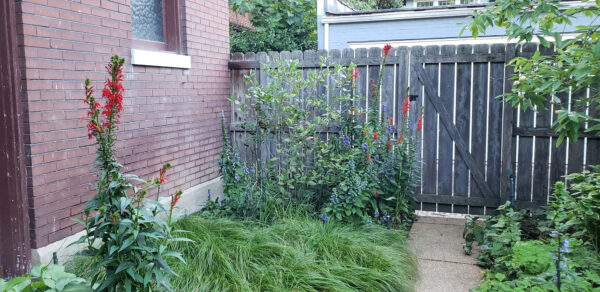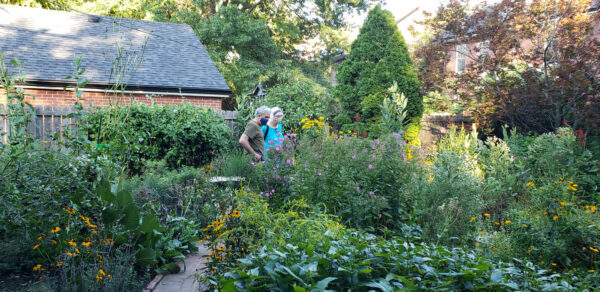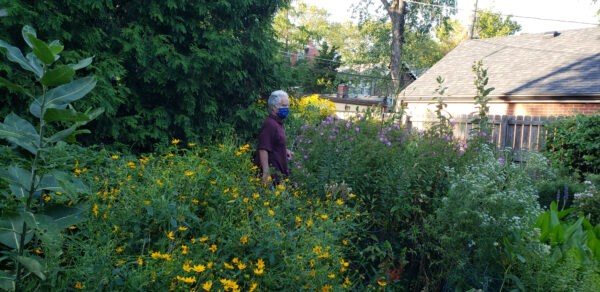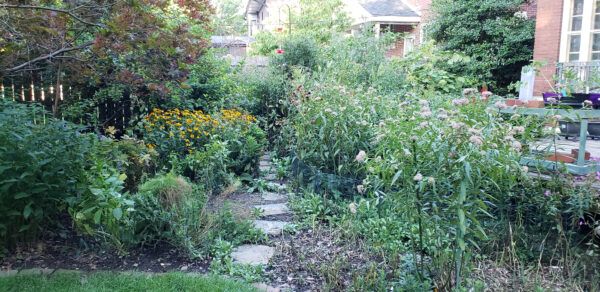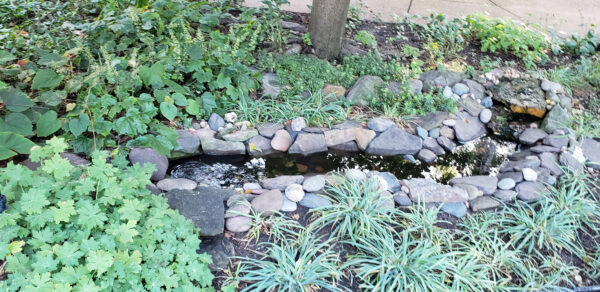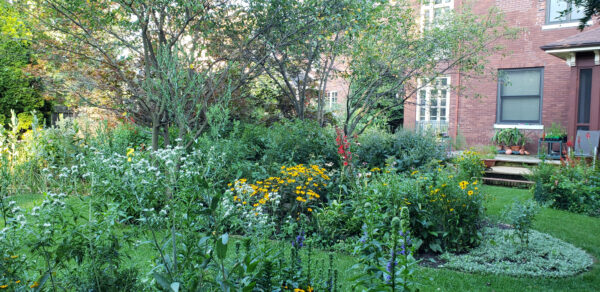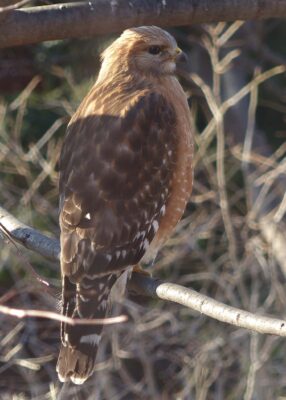 Wild Ones Gatherings August 2020
Wild Ones Gatherings August 2020
Home of Chris Kirmaier & Dewey Holten
Wednesday, Aug 12th and Saturday, Aug 15
80 attendees across the 2 dates
Our August Gatherings were held, for members only with social distancing and masks, at the home of Chris Kirmaier & Dewey Holten, in University City. Instead of our usual group discussions and information sharing at the beginning and end, we distributed the following ahead of time, written by Chris, so that those attending would still get to know the landscape.
________________________________________________________
Chris Kirmaier & Dewey Holten Yard − History & Habitats
by Chris Kirmaier
We moved into our house in Feb 1994. It was a total fixer-upper but putting that aside, two things we did that first year were to have the screen porch built and have almost all the garden beds you see today prepared for planting. Previously grass covered the entire front and back yards, dotted with a couple of mulberry shrubs/trees and a huge pin oak that shaded about 2/3 of the backyard. I am a life-long gardener and we began filling our new garden beds with “traditional plants,” heavy on hostas. Actually this began with our digging up, wrapping in burlap, moving and stashing away in mulch in November, about 60 dormant hostas from our previous yard.
We had a cool shady refuge until we lost the pin oak in 2006. Skip to 2009 when we planted the Basswood tree you see today, essentially where the pin oak had been. In 2011, I reluctantly dipped a toe into sun gardening and planted some herbs. That October I found two Monarch caterpillars on a fennel. October! The first Monarch caterpillars I ever saw – wonderful, but a bit heartbreaking to see in October – and a wake-up call. OK, so a small detail I learned later is that that caterpillar was certainly a Swallowtail…
Moving on to the following spring at a Master Gardener continuing education talk given by Mitch Leachman, I knew instantly that volunteering for Mitch as a Habitat Advisor in his Bring Conservation Home program was what I wanted to do. Somehow in August 2013 we managed to have enough natives to be Silver Certified and by August 2018 essentially all our garden space was converted to natives.
I learned that rabbits don’t like swamp milkweed. But they will chomp off every stalk to make sure they are all equally awful before abandoning them. While I labored to plant and nurture our new natives, Dewey made wire baskets to enclose individual plants or enclosed various garden spaces with rabbit-proof fencing. We thought. Then came the spring day I saw a baby rabbit go thru the small openings in the fencing into a large area I had just finished planting!!
Dewey took on the job of going around and attaching a layer of chicken wire to all
the fencing. Then came the day we saw an adult rabbit jump over the fencing. Dewey went around and doubled the height of every bit of fencing. The yard is 50/50 our combined labor. The last few years the rabbit population has plummeted, we think due to a pair of Barred Owls nesting just a block away. Good!
We put the pond in our third year in the house. Dewey and I did it ourselves. I don’t recommend it. After filling the pond, we saw that we had made a mistake with the angle of the walls and had to pump out all the water, take out the liner and ……. Ponds weren’t such a “thing” as they are now.
A neighbor was thinking to organize a tour of some of the many beautiful ponds in the neighborhood this summer as an outdoor activity for our garden club. She asked me if we wanted to be on the tour. Heck, no! Our pond is literally just a hole in the ground with a pump that recirculates the water. “But,” she wisely said, “you have dragonflies.” Ah, yes we do! Only as a result of this conversation, did I learn that dragonflies prefer calm water to reproduce in. This year I saw a female laying eggs at the water’s surface, for the first time. Before the short-lived flying reproductive adult stage, dragonflies are nymphs in the water undergoing as many as 10-15 metamorphoses over a period of 2-4 years.
Almost daily starting in May we see Common Bluets (aka Blue Damselfly) and Blue Dashers. White-tailed Dragonflies and Widow Dragonflies come and go. Ten years ago a gorgeous male Twelve-Spotted Skimmer spent a day in the yard and we finally had one again this July. Also we added a new one this year – the Eastern Pondhawk. What a name! Interestingly, for this species it’s the emerald green female that’s the beauty. A few days ago, while standing in the back corner taking a rest from weeding, I glanced down and saw a male Common Bluet land on my wrist! He just sat there for a minute, or two, until I finally had to move. Hostas were never so fun.
Yard by Habitat
Starting in front yard, coming up the driveway and taking a “tour” in the back yard. Most garden space has rich deep soil from 26 years of being cultivated.
Tree Lawn – Lyre-leaf Sage, plus a few sedges and a couple of rushes. I began with three lyre-leaf sage given to me about 5 years ago. It’s hanging in there but not at its best in far from optimal conditions.
Front Beds – things that make a go of morning shade and then about 2 hrs hot sun at noontime or mid-afternoon
Bed alongside House – This side of the house faces southwest. The area bakes in late morning and all afternoon sun. Poor soil. We are still looking for what likes this.
Narrow Strip between Fence & Driveway (in back) – Severe root competition
Under Basswood – mostly shade plants except for the end closest to the house; tends to be poor soil
Under the Styrax & Yew – mostly shade and, again, poor root-congested soil
Alongside Garage to Gate – shade or some morning sun then shade; rich soil
Curving Sunny Bed from Sidewalk to Pond – sun lovers, average moisture, very rich soil
Back Corner to Bench – plants that like sun and dry, rich soil. About 6 hrs mid-day sun.
Bench to Maple – challenging area as sun level changes a lot with the seasons. The Poke Weed gets to stay so long as we continue to have catbirds here Sept-Oct. I like it. It looks more tropical than any tropical plant in the nurseries!
Under Maple – shade, good soil but challenged by surface-rooted ornamental maple
Surrounding the Deck – rain garden; last area to be cultivated and a natural low spot, full sun
Small Bed by Deck’s end – free for all area that changes as Basswood grows;
currently gets a good morning of sun then afternoon shade
Serviceberry Bed – mix of sun and shade plants, rich soil. Some plants are changed every year
as the front Serviceberry grows.

